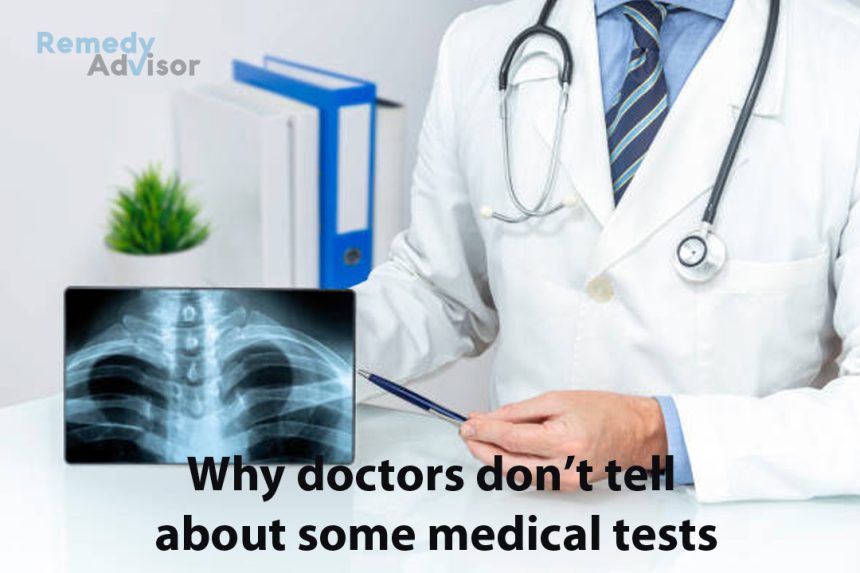The special screening tests for discovering heart disease, aneurysms, lung cancer and ovarian cancer could save your life. But there’s a good chance that your physician won’t order them because insurance companies rarely pay for them.
Reason: Insurance companies typically pay for tests only when you have been diagnosed with a particular condition or when there is a high likelihood that you might have it. With some exceptions, such as mammograms, insurance rarely pays for screening tests aimed at early detection.
Ask your doctor if you should have any of the following tests, even if you have to pay for them yourself. They are available at most diagnostic and medical centers around the country. Ask your doctor for a referral.
These tests aren’t appropriate for everyone, but early research suggests that they could be lifesavers for those with key risk factors…
Cholesterol test
Traditional cholesterol tests only measure HDL (“good”) cholesterol and triglycerides. The formula used to calculate levels of harmful LDL cholesterol isn’t always accurate. This partly explains why half of people who have heart attacks have cholesterol levels that appear normal.
Better: Expanded cholesterol tests measure LDL specifically, giving more accurate readings. About 40 million American adults have hidden heart disease. Expanded cholesterol tests could identify 95% of these patients before a heart attack occurs.
The tests also look at individual HDL and LDL particles and determine how helpful or harmful they are likely to be.
Example: HDL protects against heart disease, so high levels are desirable. But some people who appear to have high levels actually have a subtype of HDL that isn’t very helpful. Also, though all LDL particles are bad, the smaller ones are more dangerous than the bigger ones. These kinds of differences just aren’t detectable with the conventional tests but they can be detected with the expanded tests.
Who should consider them: Patients with mildly elevated cholesterol levels 200 to 230 milligrams per deciliter (mg/dl) who smoke or who have cardiovascular risk factors, such as heart problems, high blood pressure or a family history of heart disease.
Cost: $75 to $175.
Aneurysm test
Aneurysms are bulges in artery walls. They can be deadly when they rupture, killing 80% to 90% of people who have ruptured aneurysms. About 30,000 Americans die from this annually.
Better: An aneurysm scan uses an ultrasound wand to detect aneurysms in the abdominal aortic arteries. It’s the only noninvasive test that allows doctors to identify aneurysms before they rupture. Surgery to repair aneurysms can increase survival rates to 99%.
Who should consider it: Anyone over age 60 who has cardiovascular risk factors, such as high blood pressure, or who smokes as well as anyone over age 50 who has a family history of heart disease.
Cost: $60 to $200, depending on the extent of the scan.
Heart disease test

Current methods for detecting heart disease risk, such as checking blood pressure, miss up to 75% of patients who later on develop heart problems.
Better: The electron beam tomography, or EBT, heart scan is the first direct, noninvasive way of identifying atherosclerosis, the primary risk factor for heart disease. The patient lies in a doughnut-shaped machine while the electron beams map out calcium deposits in the arteries. The buildup of calcium indicates the presence of plaque fatty deposits that hamper blood flow to the heart and increase risk of blood clots. The patients who are found to have early signs of heart disease can take the appropriate steps such as lowering cholesterol, controlling blood pressure, stopping smoking, etc. to prevent problems from progressing.
Drawback: Calcium deposits don’t always indicate an elevated risk of heart attack. The deposits may be harmless. On the other hand, a person who has a clear scan could actually have dangerous levels of plaque.
Patients with high calcium levels also may have to take a follow-up stress test. If this test is positive, the patient may have to undergo an angiogram an invasive procedure. If the angiogram shows no heart disease, the patient has undergone these extra tests unnecessarily. Still the EBT is considered useful because traditional tests don’t catch most heart problems.
Who should consider it: All men over age 45 and women over age 55. If you have heart disease risk factors smoking, a family history of heart disease, etc. consider having an EBT 10 years sooner.
Cost: About $400
Lung cancer test
Lung cancer rarely causes symptoms until it reaches an advanced stage. The five-year survival rate is about 15%. Conventional X-rays may fail to detect early-stage tumors.
Better: The spiral CT scan can detect cancerous tumors as small as one grain of rice. Eighty percent of lung cancers spotted in scanning studies were caught at a potentially treatable stage.
Drawbacks: The test can result in false positives findings that indicate cancer when none is present. This could lead to unnecessary and risky lung biopsies. The false-positive rate improves when patients have follow-up scans.
Who should consider it: Smokers as well as former smokers age 50 and over who have smoked at least one pack daily for 10 years or two packs daily for five years.
Cost: $300 to $500
Ovarian cancer
More than 14,000 American women die from ovarian cancer every year. It is one of the deadliest of female cancers. Like lung cancer, it often has no symptoms until it reaches an advanced stage of development.
Better: An ultrasound device inserted into the vagina allows doctors to inspect the ovaries for any malignant changes. University of Kentucky researchers used this test on 23,000 women. Twenty-nine showed cancerous ovarian tumors, 76% of which were detected at an early, more treatable stage. Typically, only 25% of ovarian cancers are caught early.
Drawback: The test isn’t able to differentiate between malignant and benign growths so positive test results could result in unnecessary procedures.
Who should consider it: Women age 45 and older with risk factors, such as a family history of ovarian, breast or colon cancer or a history of fertility or hormone-replacement treatment or who never have been pregnant.
Cost: About $250.







